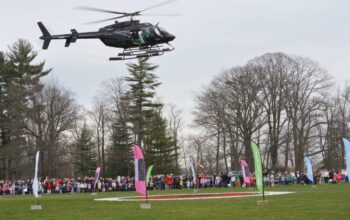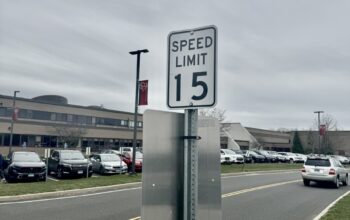
Maureen Dinnie
Reporter
This past Friday, May 28, over 150 sophomores spent their day planning and debating answers to important worldwide issues. In a simulated Model UN conference that was held during the school day, each student was a representative for a different country in the United Nations, and debated issues relative to today’s society. The issues ranged from drug trade to global security.
The faculty advisors of Model UN, history teachers Paul Phillips and Robert Stevenson, organized the event with the members of the club to help sophomores gain an understanding of the type of conference that the club travels to each year and the kinds of things they learn in the process.“The idea for Model UN has always been that it is a club within the school, created to allow students to gain a better understanding of world history and relations outside of the classroom,” Mr. Phillips said.
Usually, between 6 and 25 club members travel to conferences at Ivy League schools, where they join hundreds of other students from around the country. However, since the in-school conference was open to all sophomores that were interested, the conference was split into four different classrooms, all located in the history hallways. This was different from last year’s set up, where students were split into two rooms. “We did the in-school conference last year, but with the amount of students, we realized that not every voice was heard,” Mr. Phillips said. “By splitting the 150 sophomores into rooms, they are able to have smaller scale discussions and really get to participate.”
Many students who participated in the simulation enjoyed the event because they found that it created a learning environment different from that of a typical class discussion. Delegate for Venezuela, sophomore Austin Wolff, found that the conference provided a new way to gain experience with history and world issues. “I enjoy the club because it is so different. In history class we just get to learn, but the simulation of Model UN gives us the opportunity to work with our class and come to real life conclusions,” Austin said.
Fellow sophomore Tim Prichard, delegate for Liberia, also enjoyed the lessons he learned from the topics discussed and working with the other delegates. “Learning diplomatic skills was a new experience,” he said. “Working with others and coming to conclusions is a skill I need for life, so taking a day to work on that was a great experience.”
This year’s simulation also differed from last year’s in that new technology was integrated into the discussions. Initially, there was a concern that with the amount of sophomores who were involved, the rest of the grade would lose valuable class time in their world history classes for the day because a large portion of the class would be missing. However, “This year there are web cams with audio and video capabilities. The conferences in the rooms are shown to students who aren’t in the club during their scheduled period, and the students have the opportunity to observe the discussions as well as send in questions and points to their friends in the conference,” Mr.Phillips said.
Sophomores weren’t the only Model UN members involved; seniors and juniors involved in the club also served as chairmen to the debating students. “My job is to officiate, I bang the gavel to determine which direction the conversation is going and bring order to the discussions and debates,” junior Chairman Keri Lloyd said.
In addition to offering new learning experiences to the sophomores, the simulation sparked the interest in the club that the leading members had been hoping for. “It’s been so exciting to see all the sophomores so interested,” Keri said. “They really get into it, and it’s cool to see them so involved.”
Photos by Maureen Dinnie


